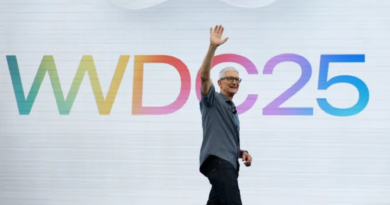India’s First AI-Generated News Anchor Launched – Will Humans Be Replaced?
In a groundbreaking moment for the Indian media industry, the country has officially launched its first AI-generated news anchor. Named “Lisa”, this virtual anchor can read news 24/7 in multiple languages without breaks, showing human-like expressions, tone modulation, and gestures. Developed using cutting-edge artificial intelligence and deep learning technologies, Lisa is expected to revolutionize how news is produced and delivered across the nation.
Lisa was launched by a prominent media house aiming to cut operational costs and ensure consistent news delivery. Unlike human anchors who need preparation time, rest, and sometimes replacements, Lisa is capable of broadcasting news updates non-stop, adapting to new scripts instantly. Her presence raises both excitement and concern across newsrooms and among viewers, signaling a new era of AI in journalism.
What sets Lisa apart is her multilingual capabilities. She can fluently deliver news in English, Hindi, and other regional languages, ensuring a wide reach across India’s diverse audience base. Her creators claim she can be updated with real-time data and breaking news, enabling quicker turnarounds than traditional processes. This makes her especially useful for delivering news in fast-changing situations like elections, disasters, and major events.
However, the emergence of AI anchors like Lisa brings up important questions about job security in the media sector. Will human newsreaders become obsolete? Media experts argue that while AI can handle repetitive, scripted content, it lacks the emotional intelligence, field experience, and nuanced reporting skills of human journalists. Anchors often connect with viewers through personal charm and spontaneous conversations something AI still struggles to replicate convincingly.
Ethical concerns also come into play. With AI-generated content, there’s a risk of misinformation spreading faster if not properly verified. Critics also fear that replacing human anchors may lead to a decline in journalistic quality and accountability. Who takes responsibility when an AI anchor makes a mistake or shares incorrect information? These are questions regulators and media companies must now confront.
On the other hand, proponents of AI believe this innovation can complement human work, not just replace it. AI anchors can be used during night shifts, breaking news, or emergencies where immediate coverage is needed. Human anchors, meanwhile, can focus on interviews, field reporting, analysis, and in-depth storytelling areas where human empathy and understanding are irreplaceable.
Lisa’s launch has drawn global attention, with several international media outlets praising India for embracing futuristic media tech. Similar AI news presenters have already debuted in China, South Korea, and the US, and India now joins the league of countries experimenting with automation in newsrooms. The success of Lisa may encourage more channels to explore AI integration in other areas such as weather forecasting, sports commentary, and even podcasting.
As India steps into this AI-driven media age, the big question remains: Will artificial intelligence replace human creativity, or simply reshape the future of journalism? The answer lies in how responsibly we balance technology and human values. For now, Lisa may be the face of the future but human anchors still hold the heart of news.




